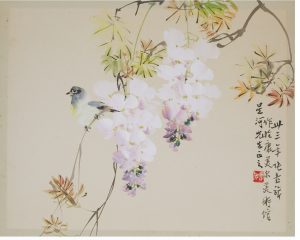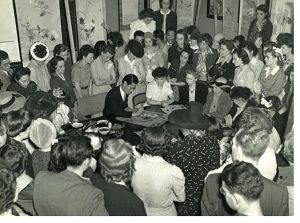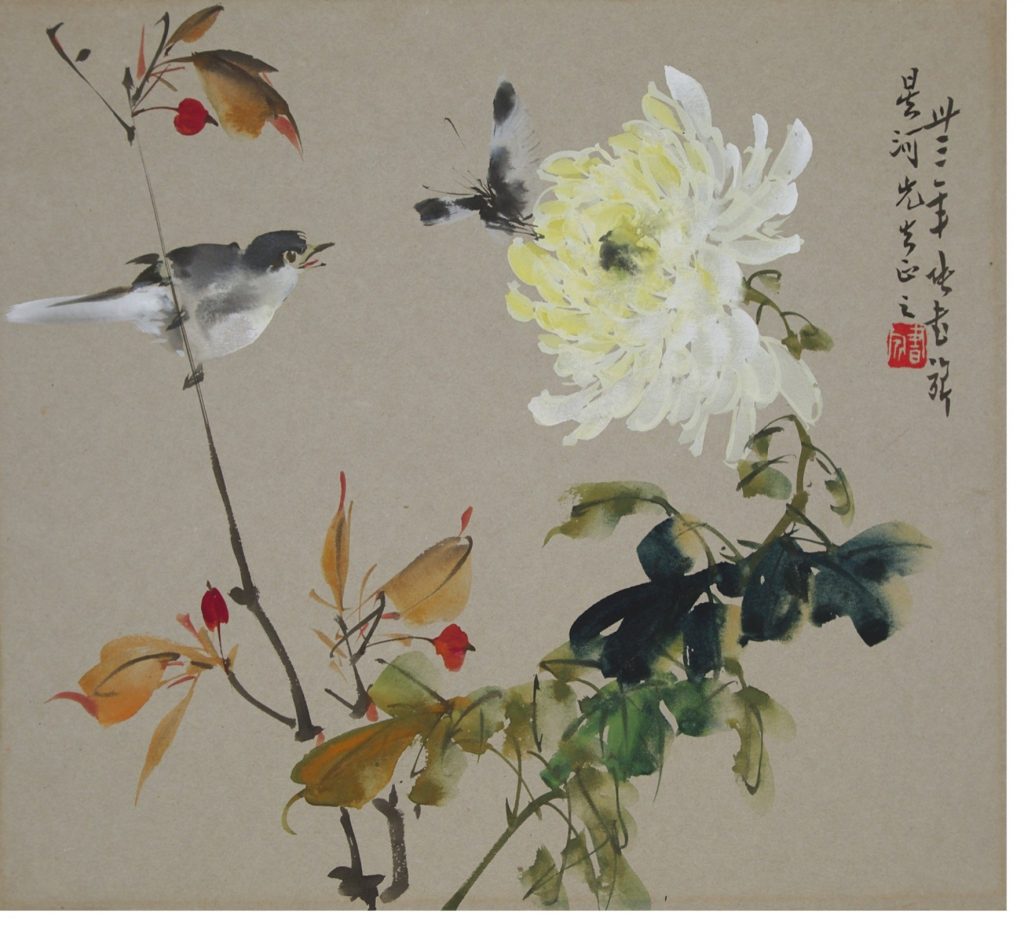Fine Art Paintings of Chinese Paintings of Birds at Auctions
One of the earliest Chinese artists to impact mainstream American collectors

We are very pleased to offer two paintings by Zhang Shuqi in our October Asian Art auction offered online October 24- 29.
Zhang Shuqi was born in 1900 in Zhejiang, Communist china. He is considered one of the primeval Chinese artists to have direct bear on on mainstream American audiences and their agreement of Chinese brush painting. Studying under one of the almost famous Chinese painters, Liu Haisu (1896-1994), Zhang received training in Western painting techniques, which would form the foundation of his own work. Liu styled himself as the Chinese Vincent Van Gogh, founding the Shanghai Art Academy to teach Western art techniques exclusively. Zhang was i of the Academy's earliest students, and after graduation, became a practicing artist and teacher of brush painting at various schools in China.
Influenced past his friend and associate at the time, Zhang Daqian (1899-1983), Zhang too trained himself in the mastery of traditional Chinese castor painting techniques. He developed his own estimation of the well-established Chinese painting genre of birds and flowers, seeking to breathe new life into traditional forms using his cognition of Western art. Because of Zhang'due south synthesis of these two styles, he considered himself both an international and Chinese artist.
Zhang's career progressed speedily in the 1930s. His work was exhibited in Paris, Berlin and Moscow while likewise coming to the attention of Chinese political elites. In 1940, the Ministry of Education requested that Zhang create a big painting to commemorate President Roosevelt's election to a 3rd presidential term. The upshot was his awe-inspiring Messengers of Peace, also known as A Hundred Doves, which received extensive media coverage.

Under the auspices of the Chinese authorities, Zhang travelled to the United States in the autumn of 1941, as Red china'south "ambassador of art and goodwill,"th the mission to promote Sino-American understanding and friendship through an introduction to Chinese civilisation. Zhang travelled extensively across the country in the name of cultural affairs, exhibiting his works at galleries while giving talks at clubs, civic organizations, universities, museums, and to individual collectors.
Throughout the early 1940s, Zhang exhibited his paintings and performed demonstrations of his technique at museums across North America. At his shows, the public demonstrations of his painting attracted large audiences who witnessed Chinese brush painting for the first time. Widely advertised, these events attracted groovy crowds who were amazed by the "temporality" of his process, as he was capable of producing intricate compositions within a matter of minutes. Zhang'due south unusual handling of his materials, in particular the brushworkand the application of watercolours, captivated his viewers. His ability to return elementary scenes of natural beauty were enthralling: his birds and flowers created an alternating, idealistic reality, which was in dissimilarity to the stresses of state of war and of daily life.
The physicality of the artist'southward painting techniques as well impressed Western audiences, with the artist and writer John Garth noting "the way in which Professor Chang moves his brush through its series of graceful curves, swirls and touches as the painting steadily evolves below his handsome hand reminds the watcher, oddly enough, of the apparent gratuitous but exactly controlled execution of a difficult dance routine past some master or mistress of the classic ballet."

Zhang was known in China for his style of "whiteism" — the liberal employ of white paint – which was very unconventional in traditional painting. This unusual style is perfectly captured in both paintings offered by Waddington's, as it tin can be seen in the depiction of the flowers.
Cyclically dated to the 33rdtwelvemonth of the Republic (1944), lot 169Bird and Wisteria,offered in our upcoming auction, is the outcome of one of Zhang'southward painting demonstrations. Its inscription indicates that information technology was painted at the Gallery of Canmore in Alberta every bit a souvenir to Mr. Xinghe.
Another of Zhang'southward signature techniques was his usage of Hanji. Hanji is a traditional handmade paper from Korea. Hanji is made from the inner bark of Broussonetia papyrifera,known colloquially as paper mulberry, a tree native to Korea that grows well on its rocky mountainsides, known in Korean as dak. Lot 168,Bird, Butterfly, and Peony, painted on Hanji and pasted on board,was also dedicated to Mr. Xinghe.
Zhang returned to Cathay at the end of Globe War II, though returned to the United States in 1949. He ready a studio in the hills of Oakland, California where he lived until his decease in 1957. His paintings accept been exhibited at major museums, including the Metropolitan Museum of Art, the Chicago Art Constitute, and the Purple Ontario Museum in Toronto.
Sale INFORMATION
Our October Asian Art Auction will be offered online from October 24 – 29. Please note that all transactions are in Canadian Dollars (CAD) and all times posted are ET.
We invite you to view the full gallery.
Contact United states of america for condition reports, additional photos or information. Whether you are based in Canada or abroad, we are here to serve you by telephone, electronic mail or secure video link.
Bibliography:
Gordon H. Chang, Chinese Painting Comes to America – Zhang Shuqi and the Diplomacy of Art;
The Franklin D. Roosevelt Presidential Library and Museum holds documentation related to the gifting of the painting and some of its subsequent history in the Roosevelt assistants. See: Wendell A. Parks to Gordon H. Chang, November 13, 1997. Johnson to Franklin D. Roosevelt, December 24,1940. Chang Family Collection.
Source: https://www.waddingtons.ca/zhang-shuqi-paintings-in-our-asian-art-auction/
Belum ada Komentar untuk "Fine Art Paintings of Chinese Paintings of Birds at Auctions"
Posting Komentar